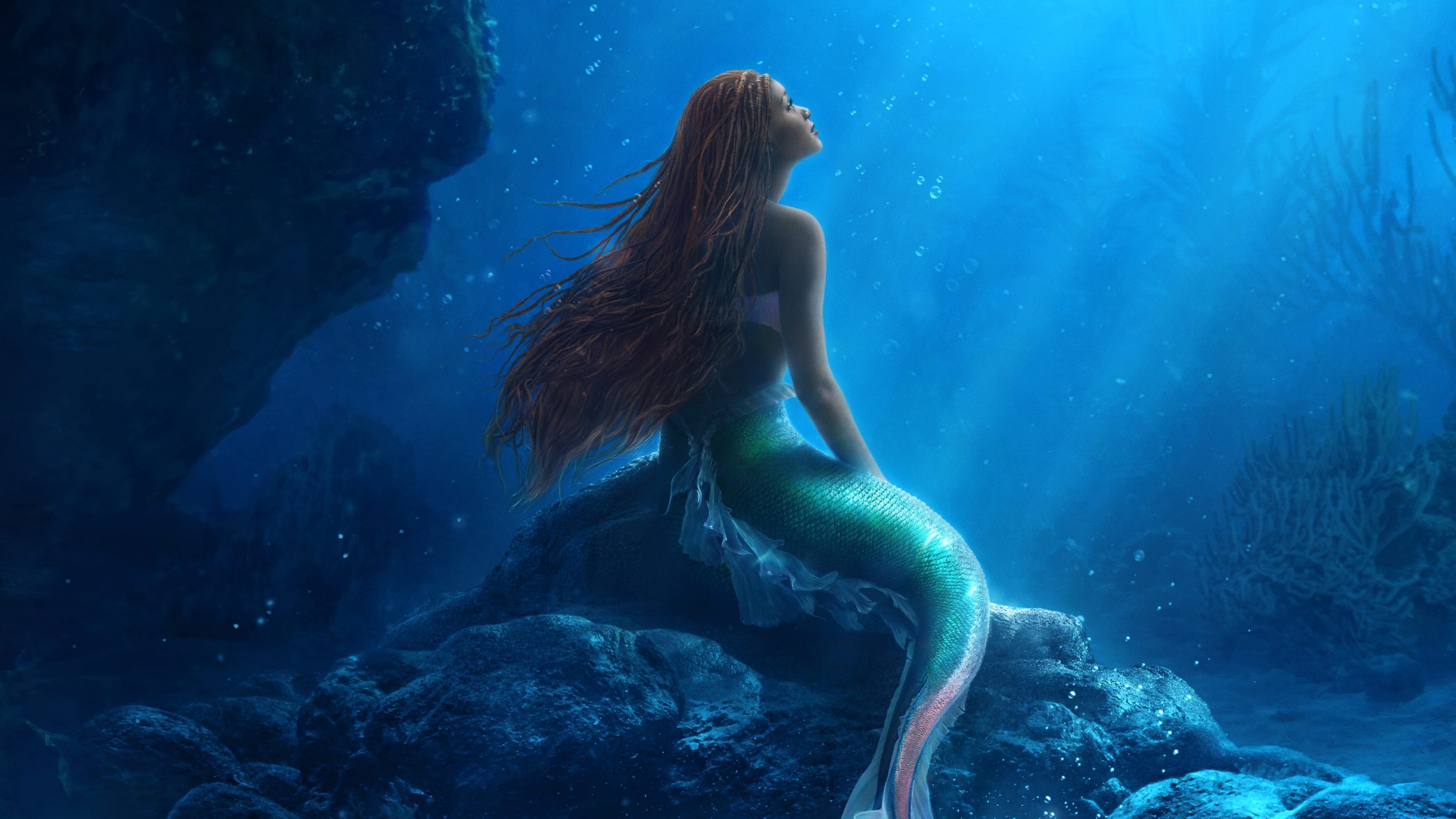The Little Mermaid
Walt Disney StudiosAfter a long wait, the live-action remake of Disney’s The Little Mermaid is finally here. Halle Bailey stars as the titular character, who longs to live in the surface world and experience being a human after she falls in love with Prince Eric (Jonah Hauer-King). However, her dad, King Triton (Javier Bardem), forbids Ariel from leaving the sea, thinking that all humans are dangerous after one killed his wife. Ariel then goes to Ursula (Melissa McCarthy), a sea witch who promises to fully transform Ariel into a human if she can kiss Eric before the sun sets on the third day of the spell. Unbeknownst to Ariel, Ursula has plans of her own and will do anything to stop the kiss from happening and rule over Atlantica.
It accurately follows the original's plot, with a few new additions. However, one going into the movie should expect director Rob Marshall’s take on Disney’s The Little Mermaid to be a nearly shot-for-shot recreation of the animated original without the creativity and personality that made the animated classic such an iconic piece of cinema. There isn’t a single visual effect or location that felt as potent and as tangible as the animated film. When the 1989 original introduces audiences to Atlantica or goes to the Under the Sea number, the audience feels engaged because everything under the sea looks bright, colorful, and imaginative. When Marshall’s The Little Mermaid introduces audiences to Atlantica, it looks completely empty and unimaginative.
There is a neat use of IMAX throughout the movie. Marshall and cinematographer Dion Beebe slowly open the frame whenever it goes underwater instead of having the film jarringly shift aspect ratios from under to over the sea. It makes the sea, in its opening moments, feel more expansive and grandiose. But there’s nothing there – actors clearly act in empty, green screen-laden spaces. There’s no life under the sea, it’s all artificial and drab-looking. Some will say comparing the live-action version to its animated counterpart is unfair because it’s basically apples and oranges. While that may be true, the difference in quality between the two is staggering. When the original movie gives Marshall and Beebe the blueprint to follow to craft a compelling Atlantica, they would be fools to do something else or make the sea as unengaging and as boring as possible.
Unfortunately, this is what they do. There isn’t a single sequence under the sea that feels imaginative and fun. Even the “Under the Sea” number, which tries to add some energy through cuts straight out of a music video, can’t help but feel…fake. Of course, their technique is “dry for wet, compared to Avatar: The Way of Water’s “wet for wet” underwater scenes. Still, that doesn’t stop them from making the sea feel lively. When Sebastian (Daveed Diggs) tells Ariel that the sea is much better than the surface, the audience must feel that “hey, the crab is making a good point.” That’s why the scene in the animated film succeeds: the sea looks incredible! Who would want to stay in such a vapid and poorly-lit space? Can’t blame Ariel for wanting to explore the world…
The contrast between the underwater and surface scenes is incredible. There’s a real mastery of tension when audiences experience the shipwreck of Prince Eric’s vessel, and there’s an actual sense of wonder when Ariel discovers the surface world for the first time in one of the film’s newer songs. So where’s that wonder underwater? Nowhere to be found. Nothing feels tangible in crafting a legitimate and enthralling spectacle or a moving piece of family entertainment. It checks all of the boxes that a faithful remake needs to do, but what more does it offer to audiences? Aside from Halle Bailey delivering a towering performance, not much.
Bailey is the only reason why anyone should bother watching this movie. She is the heart and soul of The Little Mermaid, showing the world that she is Ariel. This will hopefully lead her to a promising career in Hollywood, and it certainly won’t be the last time audiences will see her as Ariel, since this remake will make all the money in the world and likely greenlight a sequel. Supporting performances from Jonah Hauer-King and Javier Bardem are also good, and even the vocal talents of Awkwafina, Jacob Tremblay, and Daveed Diggs are decent as Scuttle, Flounder, and Sebastian. However, their designs look completely terrifying, and Lin-Manuel Miranda’s “The Scuttlebutt” is just…ugh…it’s best not to talk about it. On the other hand, McCarthy’s portrayal of Ursula is forgettable at best, especially when measuring up to the late Pat Carroll. The CGI on her is especially bad, and even worse when the hilariously bad climax hits the screen.
While Bailey can absolutely sing her heart out and is arguably the best part of the whole thing, the movie does her no favors. The Little Mermaid is an ultimately lifeless piece of “content” that no one will remember in a few years from now, aside from Bailey’s star-making performance. There isn’t a memorable shot, visual effect, or setpiece that feels like it was crafted from the director of films like Chicago, Into the Woods, Mary Poppins Returns and Pirates of the Caribbean: On Stranger Tides. Disney could very well say that an AI program directed the whole thing and no one would probably bat an eye. This is how lifeless those remakes have gotten, and it’s time for audiences to ask more out of their blockbusters. Oh well, this will probably clear $1 billion in three weeks, and pave the way for more of these unnecessary reimaginings to continue.


